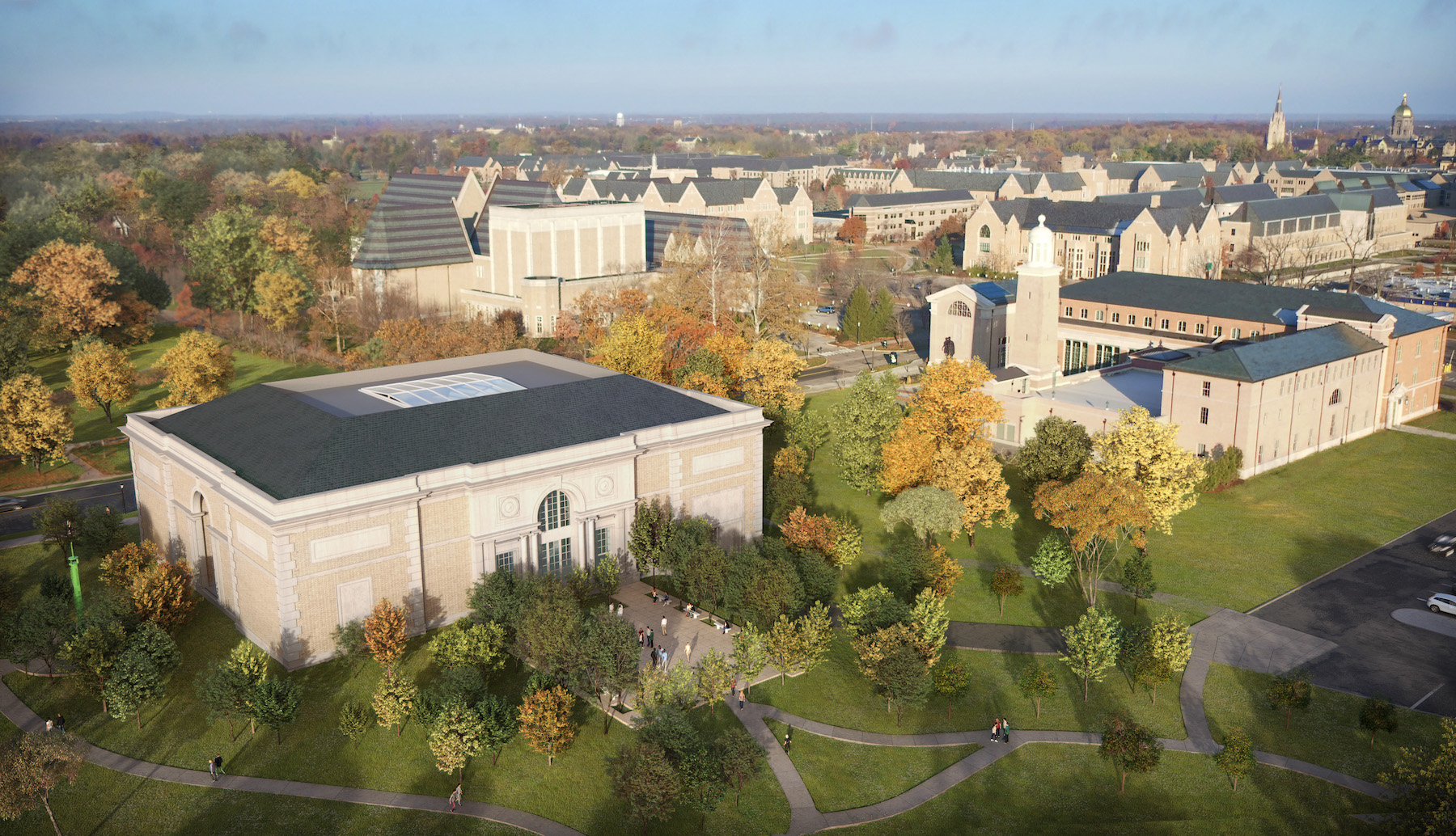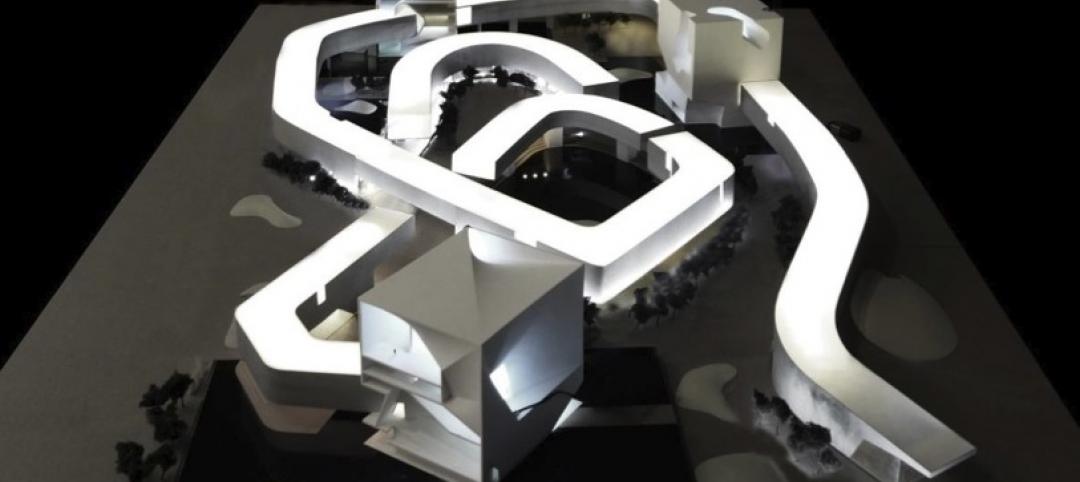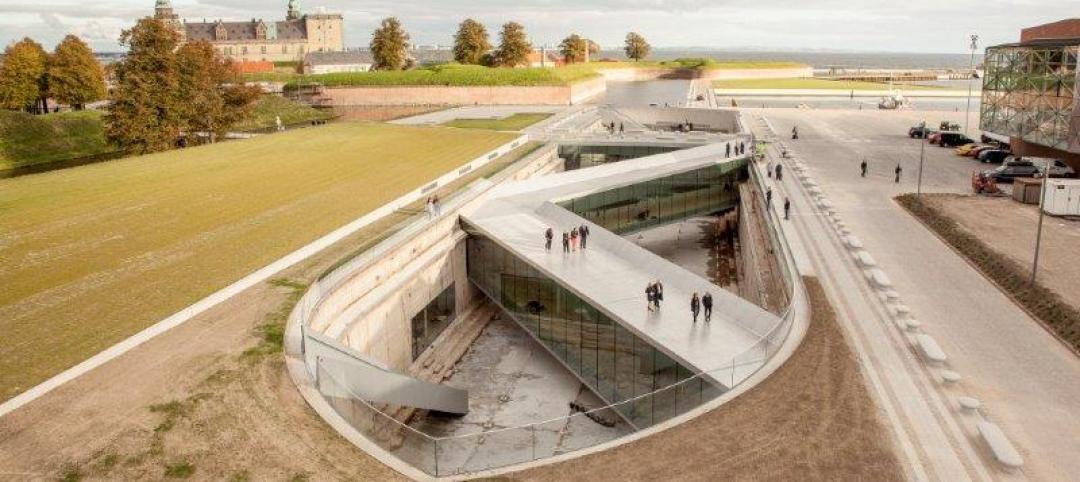Next November, the University of Notre Dame in Indiana is scheduled to open the first phase of Raclin Murphy Museum of Art, a 70,000-sf cultural facility that will eventually replace the campus’ venerable Snite Museum of Art and double the exhibit space available for Notre Dame’s 31,000-item art collection.
The building under construction establishes a new location for the museum, and is considered to be a “front door” to an arts district on the campus’ south side that already includes the DeBartolo Performing Arts Center, the nine-acre Charles B. Hayes Family Sculpture Park, and the Matthew and Joyce Walsh Family Hall of Architecture.
Long-term storage of Notre Dame’s vaunted collection of prints, drawings, and photography, along with most of the museum’s personnel, will remain at Snite until Phase 2 of this complex is realized. Phase 2’s start date and timeline have yet to be disclosed, but what’s known is that it will increase the size of the new museum complex to 132,000 sf, and provide more gallery space, offices, an auditorium, and a works-on-paper study center.
Robert A.M. Stern Architects (RAMSA) is the design architect on this project. The rest of the Building Team includes Bulley & Andrews (GC), the engineering firms Kohler Ronan (MEP), Thornton Tomasetti (SE) and TfL (CE); and Gallagher & Associates (exhibit design). The construction cost has not been disclosed.
Giving exhibits equal weight in the museum
Last week, BD+C interviewed RAMSA’s Melissa DelVecchio, FAIA, Partner; and Anthony McConnell, Senior Associate, about the Raclin museum’s design features within its three floors and a lower level.
DelVecchio noted that new construction was necessitated by the lack of available space near the Snite Museum for expansion. When Snite opened a generation ago, it was on the outer edge of what was then Notre Dame’s campus; now, it’s roughly in the middle of a significantly bigger campus. “It’s hard to find, and there’s no nearby parking,” she said.
Snite only has enough space to exhibit 2-3 percent of the museum’s collection, whereas Raclin will be able to show around 5%. DelVecchio pointed out, as well, that the new building will house a large temporary gallery and loading dock to better attract and handle traveling exhibits, something that Snite was not able to accommodate. The new building also will have more storage space that’s accessible to students for study purposes.
The galleries within Raclin revolve around a central, multi-height atrium that rises to a skylight, and the galleries themselves will have “equal prominence,” said McConnell, compared to some spaces in Snite that relegated the art to “second class” exhibition.
The lower level of Raclin “has no back,” he explained, in that its gallery for International Modern and Contemporary Art blends into the museum’s sculpture court. Raclin is also distinguished on its west side by an oval-shaped working chapel, Our Lady, Queen of Families, that will display some art and be near galleries with ecclesiastic art on display.
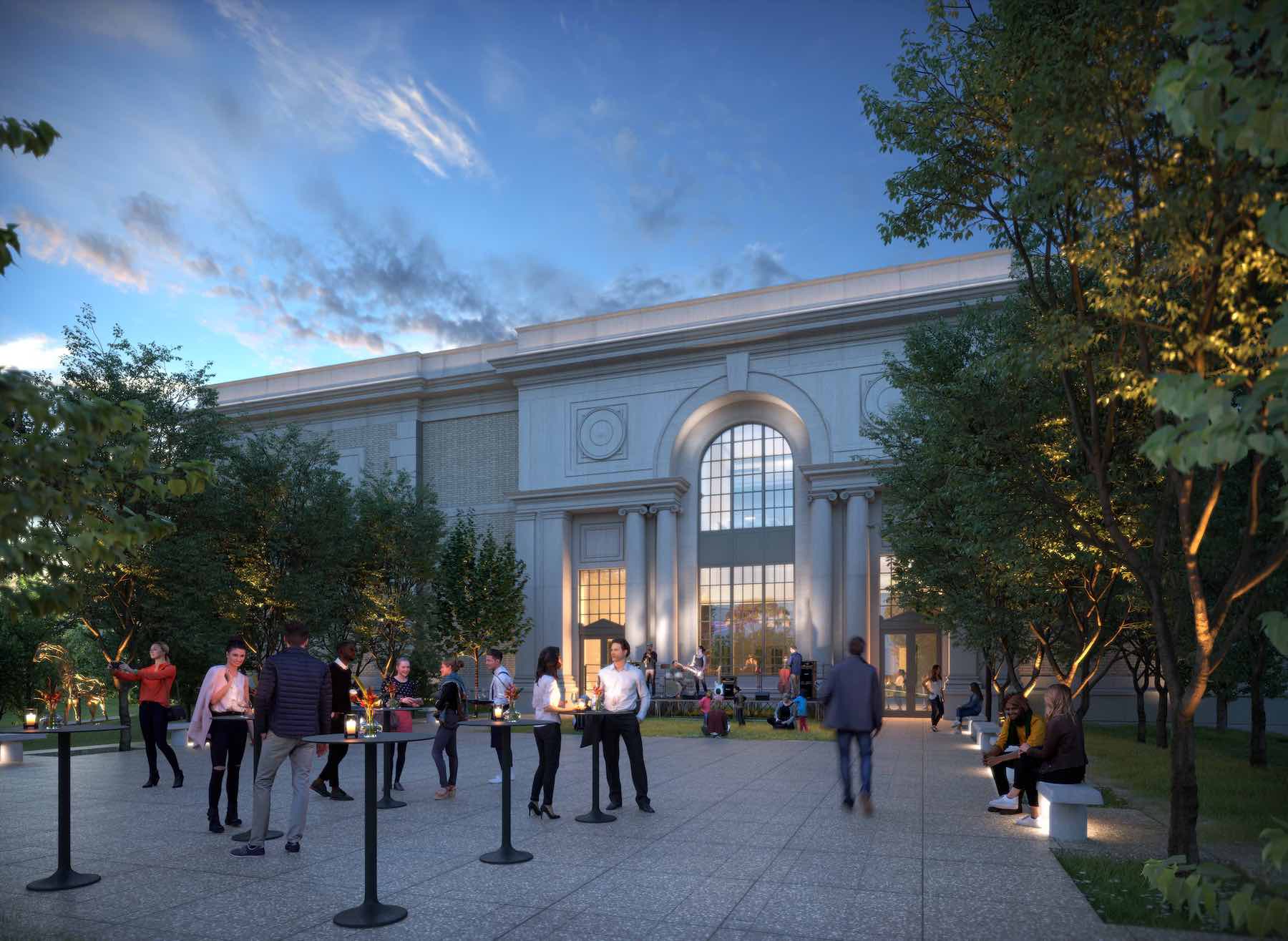
From an operational standpoint, the museum is designed to present zero thresholds for patrons with disabilities. That includes the installation of automated door openers for the facility’s restrooms.
The exterior design of this rectangular building is classical, and its materials will match the rest of the arts district and streetscape, said DelVelcchio.
Related Stories
| Nov 25, 2013
Building Teams need to help owners avoid 'operational stray'
"Operational stray" occurs when a building’s MEP systems don’t work the way they should. Even the most well-designed and constructed building can stray from perfection—and that can cost the owner a ton in unnecessary utility costs. But help is on the way.
| Nov 19, 2013
Top 10 green building products for 2014
Assa Abloy's power-over-ethernet access-control locks and Schüco's retrofit façade system are among the products to make BuildingGreen Inc.'s annual Top-10 Green Building Products list.
| Nov 13, 2013
Installed capacity of geothermal heat pumps to grow by 150% by 2020, says study
The worldwide installed capacity of GHP systems will reach 127.4 gigawatts-thermal over the next seven years, growth of nearly 150%, according to a recent report from Navigant Research.
| Nov 13, 2013
First look: Renzo Piano's addition to Louis Kahn's Kimbell Art Museum [slideshow]
The $135 million, 101,130-sf colonnaded pavilion by the famed architect opens later this month.
| Oct 30, 2013
15 stellar historic preservation, adaptive reuse, and renovation projects
The winners of the 2013 Reconstruction Awards showcase the best work of distinguished Building Teams, encompassing historic preservation, adaptive reuse, and renovations and additions.
| Oct 30, 2013
Steven Holl selected for Culture and Art Center in Qingdao, besting Zaha Hadid, OMA
Steven Holl Architects has been selected by near unanimous jury decision as the winner of the new Culture and Art Center of Qingdao City competition, besting OMA and Zaha Hadid Architects. The 2 million-sf project for four museums is the heart of the new extension of Qingdao, China, planned for a population of 700,000.
| Oct 30, 2013
11 hot BIM/VDC topics for 2013
If you like to geek out on building information modeling and virtual design and construction, you should enjoy this overview of the top BIM/VDC topics.
| Oct 29, 2013
BIG opens subterranean Danish National Maritime Museum [slideshow]
BIG (Bjarke Ingels Group) has completed the Danish National Maritime Museum in Helsingør. By marrying the crucial historic elements with an innovative concept of galleries and way-finding, BIG’s renovation scheme reflects Denmark's historical and contemporary role as one of the world's leading maritime nations.
| Oct 28, 2013
Urban growth doesn’t have to destroy nature—it can work with it
Our collective desire to live in cities has never been stronger. According to the World Health Organization, 60% of the world’s population will live in a city by 2030. As urban populations swell, what people demand from their cities is evolving.
| Oct 18, 2013
Researchers discover tension-fusing properties of metal
When a group of MIT researchers recently discovered that stress can cause metal alloy to fuse rather than break apart, they assumed it must be a mistake. It wasn't. The surprising finding could lead to self-healing materials that repair early damage before it has a chance to spread.


